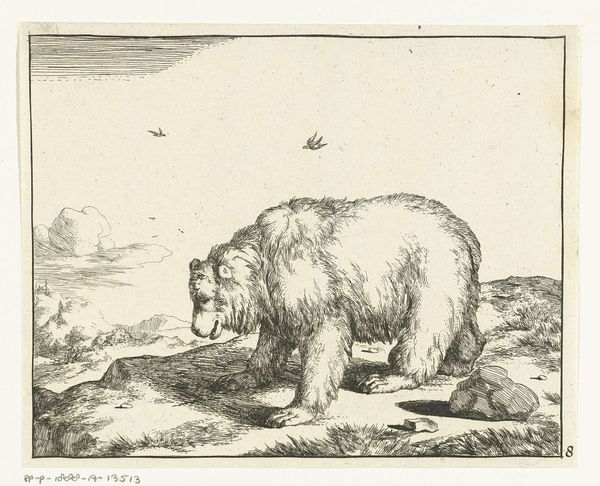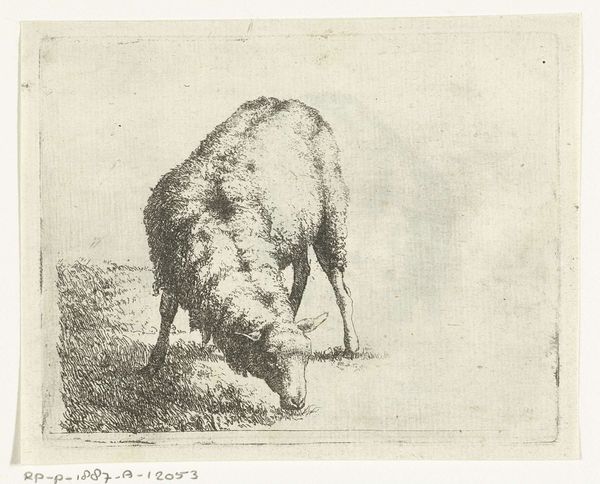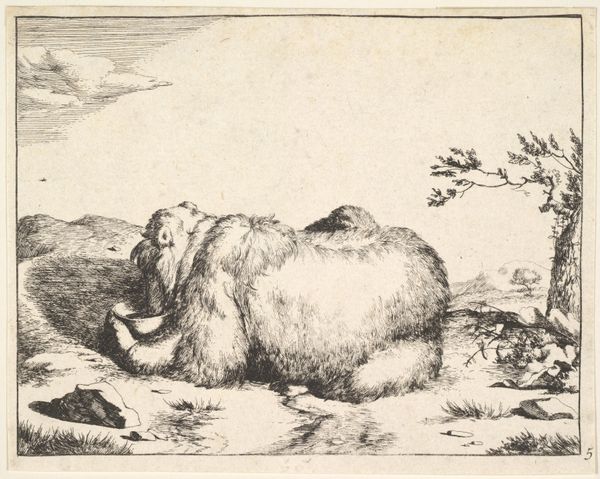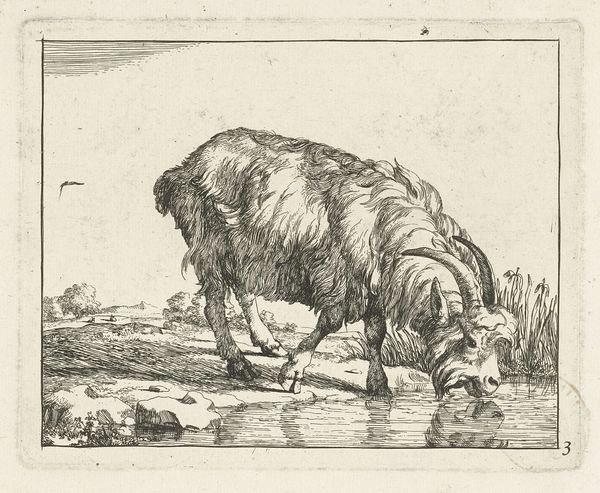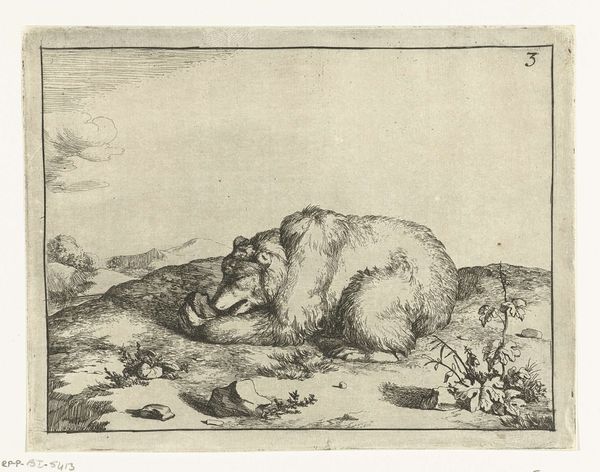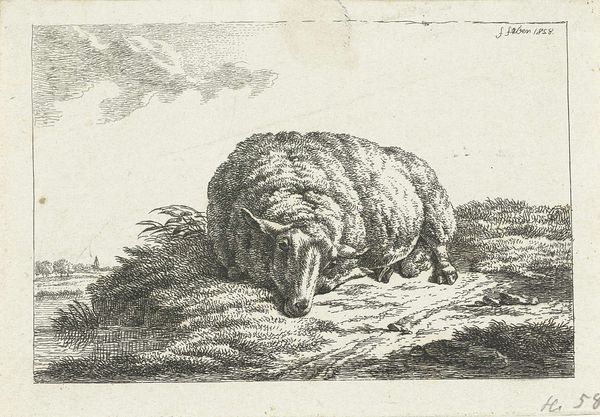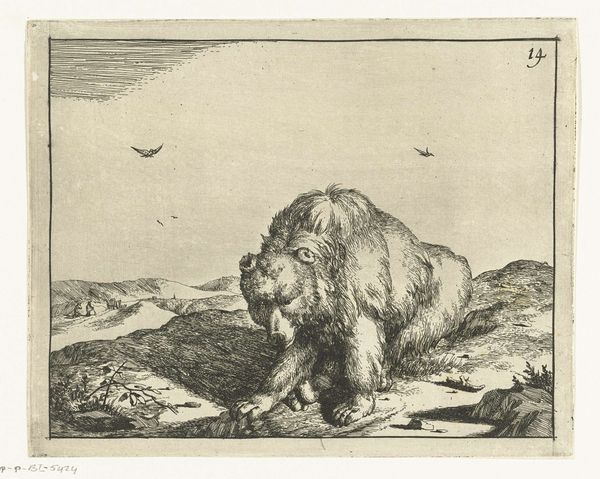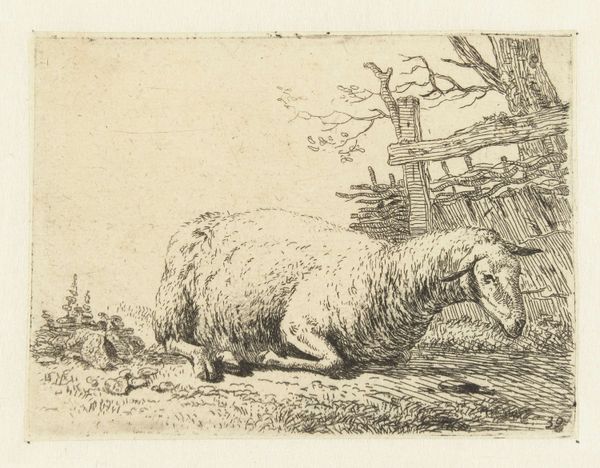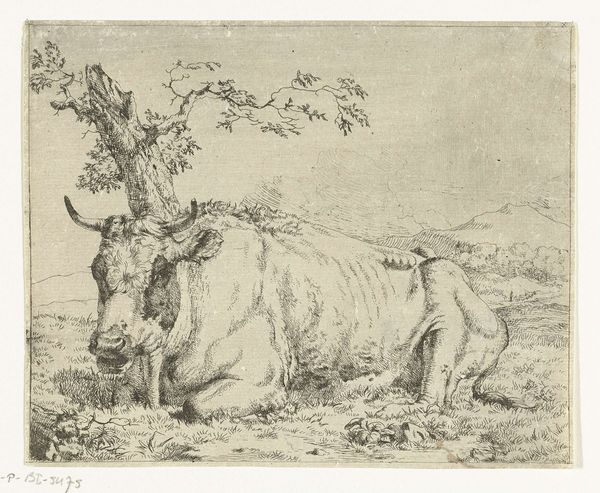
print, etching
#
baroque
#
animal
# print
#
etching
#
landscape
#
figuration
Dimensions: height 116 mm, width 151 mm
Copyright: Rijks Museum: Open Domain
Editor: This is Marcus de Bye’s "Standing Bear, Seen From Behind," an etching from 1664, now housed at the Rijksmuseum. There's something quite melancholy about the way the bear's back is turned, and how small it seems within the landscape. How do you interpret this work? Curator: The image presents us with an interesting interplay of power and vulnerability. While the bear is undeniably a symbol of raw strength and wildness, its averted gaze and placement within a vast landscape diminishes that somewhat. I wonder if de Bye is attempting to challenge anthropocentric ideas of the era? How does situating a 'wild' animal into an artistic landscape inform colonialism and exploitation? Editor: That’s a fascinating point about colonialism! I hadn't considered that connection. The bear, isolated in this space, now feels like it's a metaphor for something more than just an animal study. But could de Bye be attempting to showcase dominance, to highlight man's 'victory' over this creature via the artistic capture? Curator: Absolutely. It could function on both levels simultaneously, which is precisely the tension at play. The 'capture' through etching implies a certain control. What seems like a 'neutral' depiction of nature also performs power dynamics, reminding us of who is in control, and what worldview is valued. Do you see this power dynamic represented also in the technical execution, like the fine lines of the landscape? Editor: Yes, I see how that reinforces your argument about power. The meticulous details contrast sharply with the somewhat blockier form of the bear. Curator: It certainly raises pertinent questions regarding representation, power, and our relationship with the natural world. The contrast you notice helps expose those relationships. Editor: Thinking about this etching beyond its simple subject matter, forces me to reckon with its historical and societal context, seeing its true value. Thank you for this lesson! Curator: My pleasure, together we revealed the silent language of the piece.
Comments
No comments
Be the first to comment and join the conversation on the ultimate creative platform.
